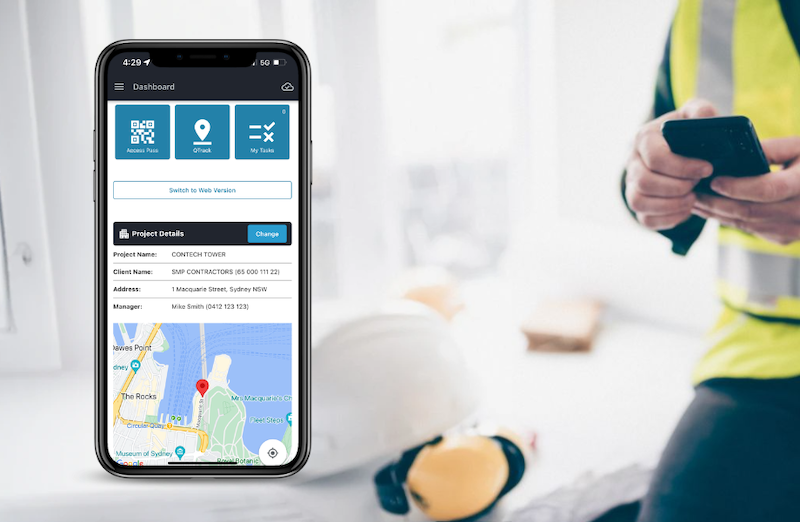Digital Continuity Now More Critical Than Ever

Digital continuity—you may not be familiar with the term, but you already know what it’s like to experience its absence.
Think of missing plans and documents, unshared emails, poorly recorded EOTs/variations, incomplete defect lists … and all the delays, rework, negotiations and cost blowouts that result.
During the past decade we have seen the property and construction industry’s accelerated adoption of digital systems and processes.
The question of “if” we digitise is no longer debated, it’s now more a matter of “when” and “how”.
“How” is critical because as more processes are digitised, there are more stakeholders brought into a project earlier and for longer, responsibility matrices grow, and the resulting project data set can quickly soar in size and complexity.
Data transparency beyond practical completion
As regulation increases, and more risk is pushed back up the line, developers and REITs are requiring greater insight, visibility and control over project data;from acquisition and planning, through to DLP and handover.
The reasonable expectation is for data access and transparency that goes beyond practical completion and allows analysis of data patterns and trends.
Similarly, principal contractors have requirements to introduce additional consultants into the project earlier, to provide access to plans, to quote on EOT/variations and comprehensively manage the construction phase.
Tenants, purchasers,and end users also want to be part of the handover and to know they are receiving a quality building without material faults.
Herein lay the challenge, how can key project stakeholders accurately record and preserve every data point, for all users on the system, for the duration of the project, so it can be easily used and recalled at any time during a project lifecycle that often spans years.
Digital continuity
Digital continuity is not as sophisticated as it sounds. It is simply the ability to record, use and access project information in the way the project teams need, for the duration of the project and beyond.
The complexity lies in engineering the software to effectively deliver it, and defining algorithms to manage data synchronisation, secure access and role-based permissions, that is, easily control what a stakeholder can see and do, regardless of when they enter the project and who they work for.
Digital continuity, or more accurately the absence of it, has not been effectively solved in construction industry software to date. Instead, point solutions have proliferated in the property and construction software market. They’re easier to build but they come with limitations.
Limitations of point solutions
Point solutions, as the name suggests, are designed to be used at a point in time, to achieve task specific outcomes, for example, a file management app used during planning and design.
Using point solutions to manage a project from concept to handover becomes unfeasible because too many point solutions are needed across each project phase, and each solution contains data that becomes siloed and inaccessible to people who didn’t use it—there is no data continuity when the system used by a consultant is not shared or can’t be accessed by the contractor.
The situation results in multiple datasets, no ability to audit records, and many versions of the truth.
It is exactly these shortcomings that have limited the industry’s ability to effectively manage and share data across the entire project lifecycle.

Solution: A single operational workspace
To overcome the limitations of existing industry software, Simpel, an Australian software and technology company, developed a modular software solution that functions within a single operational platform.
The platform is governed by the principles of unlimited users, secure role-based permissioning, connected workflows, centralised file storage and real-time file synchronisation.
Essentially, Simpel is a unified platform that synchronises data across all users and is securely accessed by anyone with authorisation—at any point in time in the project lifecycle.
QA Inspections app: From design to DLP and beyond
Simpel recently launched their latest innovation, a new defecting app that extends the functionality of their quality module, QTrack, and enables fast completion of inspections and defecting on tablets and mobiles, even when offline.
Simpel’s app transcends the typical defect phase, also allowing tenants, end users and their representatives to quickly identify and raise issues for completed assets once in occupation. Using QTrack, principal contractors can then quickly issue tasks to subcontractors whilse retaining full oversight to their clients, importantly building on the same historical dataset for the project.
Additional stakeholders can also be added at any time during the project, meaning they can be involved in the creation, management, completion and close-out of defects and tasks.
The new app ensures each stakeholder can action tasks or review the real-time status of each. It provides data continuity between all parties and ensures better quality outcomes by having clear evidence that the close out of issues has been done correctly.
Simpel is future proofing the way quality and defecting is managed and closed out, not only during construction and DLP phase, but beyond.
To learn more about the app and quality module QTrack and to watch an online demo click here.
The Urban Developer is proud to partner with Simpel to deliver this article to you. In doing so, we can continue to publish our daily news, information, insights and opinion to you, our valued readers.













